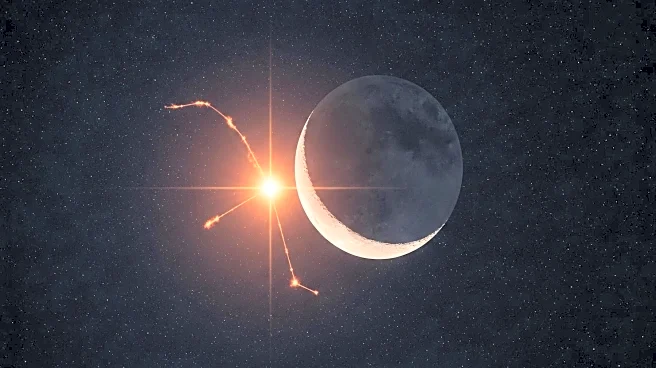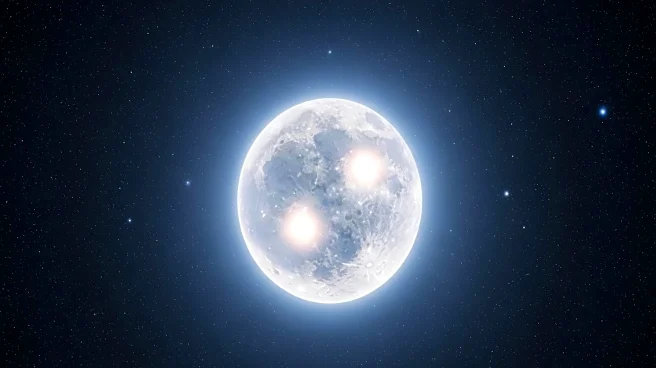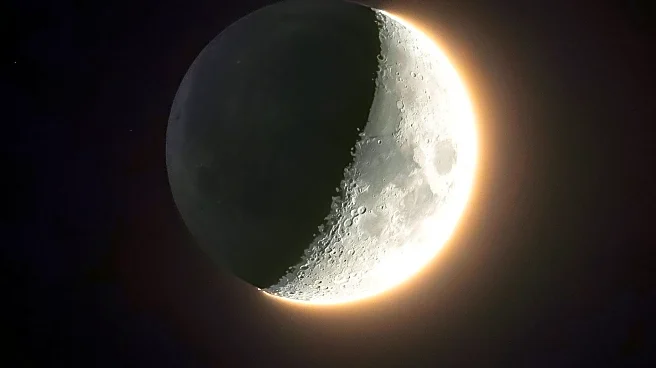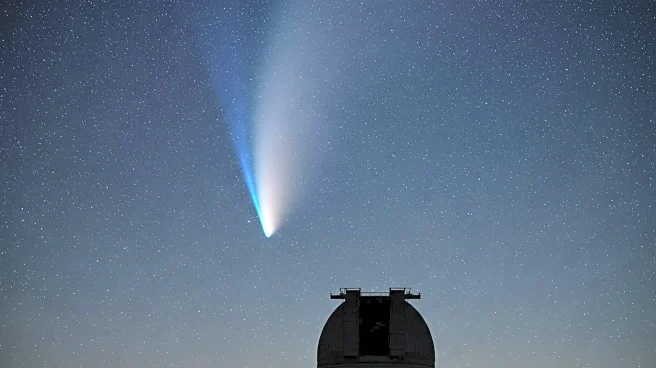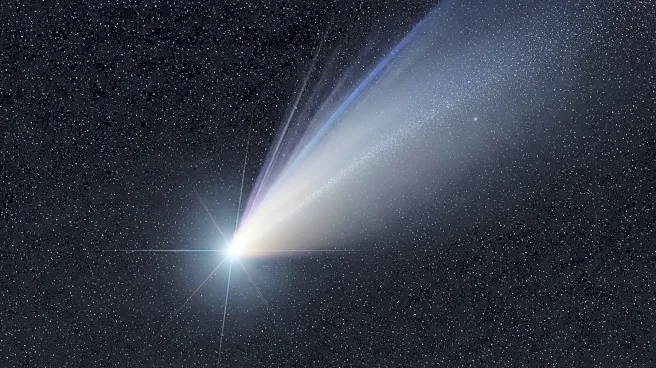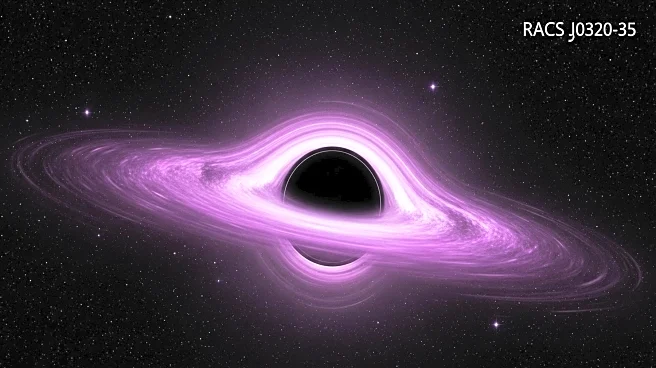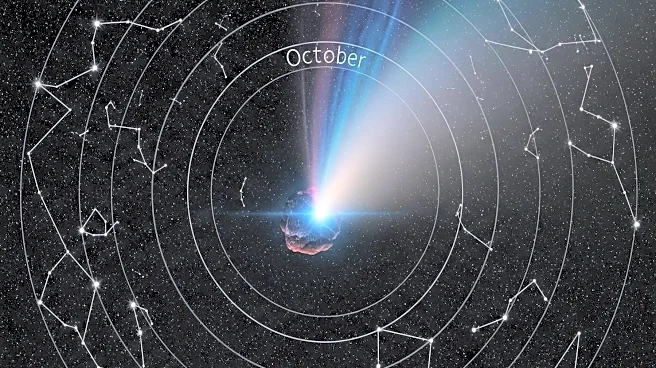What is the story about?
What's Happening?
On September 27, 2025, the Moon will be positioned near Antares, the bright red giant star in the constellation Scorpius. This celestial event will occur as the Moon passes 0.6° south of Antares at 2 P.M. EDT. Observers will have the opportunity to view the Moon and Antares in the southwest sky shortly after sunset. The waxing crescent Moon, illuminated from its eastern side, will be visible alongside Antares, which is known for its red hue and brightness. Antares, a red giant star, is significantly larger than the Sun and would engulf the inner planets if placed at the center of our solar system. The event provides a chance to observe earthshine, a phenomenon where sunlight reflects off Earth and illuminates the dark portion of the Moon.
Why It's Important?
This astronomical event is significant for both amateur and professional astronomers as it offers a unique opportunity to observe the interaction between the Moon and a prominent star. Antares, often mistaken for Mars due to its color and brightness, is a key feature in the night sky. Observing such events can enhance understanding of celestial mechanics and the characteristics of stars like Antares. Additionally, the visibility of earthshine during this event provides insights into the reflective properties of Earth and its impact on lunar observation. Such events can inspire interest in astronomy and encourage educational activities related to space science.
What's Next?
Following this event, astronomers and sky enthusiasts can look forward to other celestial occurrences, such as the visibility of Mars in Virgo, which sets shortly after the Sun. Observers are encouraged to use binoculars to spot Mars, which will appear slightly fainter than Antares. The ongoing observation of celestial events contributes to the broader understanding of the universe and supports ongoing research in astrophysics. Future events will continue to offer opportunities for observation and study, fostering a deeper appreciation for the complexities of the cosmos.
Beyond the Headlines
The alignment of the Moon with Antares highlights the dynamic nature of celestial movements and the intricate dance of heavenly bodies. This event underscores the importance of observational astronomy in understanding the universe's vastness and the lifecycle of stars. Antares, in its red giant phase, serves as a reminder of the evolutionary processes that stars undergo. Such events can also spark discussions on the cultural significance of astronomy and its role in human history, as celestial bodies have been used for navigation and timekeeping throughout civilizations.
AI Generated Content
Do you find this article useful?
